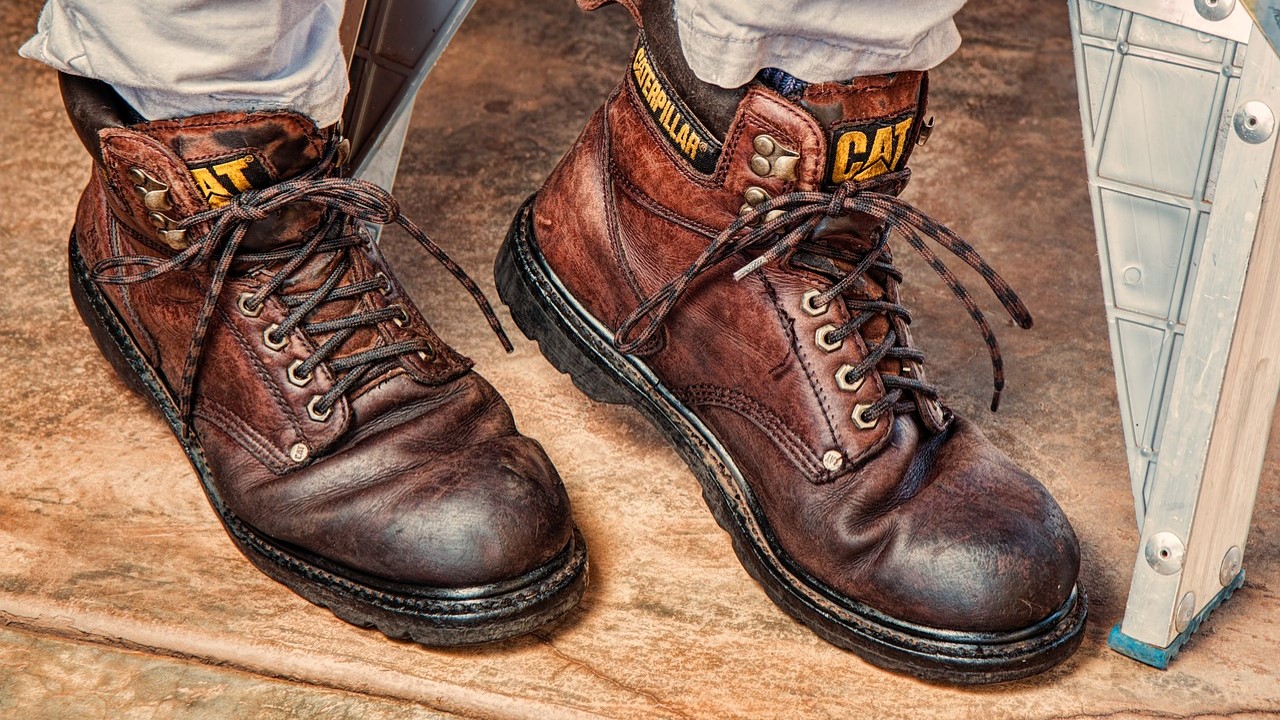“…I can feel it in my toes. Christmas is all around me. And so the feeling grows.” — Bill Nighy in Love Actually
Although I have on a couple of occasions, I don’t usually give protective footwear as a gift during the holiday season. Most people don’t consider protective footwear to be very festive.
However, holiday season or not, work goes on. Those shoes we see elves wearing? Sure, they’re fine for the elves working in the front office, but what about the elves working on the production line, or in shipping? They need something to protect them.
In the United States, OSHA regulates the use of foot protection in 29 CFR 1910.136. OSHA specifically refers to ASTM F2413-2005, which has been updated. The current version is ASTM-F2413-2018. As far as I know, none of Santa’s workshops are in the U.S., so OSHA has no jurisdiction. But regardless of OSHA’s jurisdiction, we should expect Santa to insist on a hazard assessment, so his elves are wearing the correct protective footwear.
“Standard” Protective Footwear
The ASTM F2413 minimum specification for all protective footwear, PT, is impact resistance and compression resistance at the toe. This is the classic “steel-toed boot.” The footwear is equipped with a protective cup—some are steel, some are a strong plastic composite—that protects the toes from being crushed when something is dropped on them or when something is set on them. The first point of all protective footwear is to make sure that we don’t “feel it in our toes.”
But there is more to our feet than our toes. And those parts take special protection.
Puncture Resistance
For those of us in a work environment where it is possible for sharp objects to protrude up from the floor or work surface, such as in construction, puncture resistance is a valuable protection. Many safety shoes have steel shanks in the soles to increase their stiffness and durability. These steel shanks do not, however, impart puncture resistance to the shoes.
ASTM classifies protective footwear that provides puncture resistance as PR. If an elf’s “steel toes” aren’t classed as PR, then they shouldn’t be counting on any puncture resistance.
Protecting Our Footbones
Physiologically, elves are much like humans. Sure, their ears are pointed, but they have toes that are attached to the bones that go all the way back to the heel. Those bones are called metatarsal bones. That steel cup in PT boots protects the toes, but nothing further back. So, we drop something on our foot behind the cup, there is no protection. Worse, the cup can serve to trap it there. This is especially a concern when handling heavy cylindrical items, like pipe or pressurized gas cylinders.
ASTM classifies protective footwear that protects the metatarsal bones—Metatarsal shoes—as Mt. They are equipped with a cushioned shield that is affixed to the toe and prevent the toe cup from trapping anything. And they are ugly. No self-respecting elf working with the public would be caught dead in a pair of Mt safety shoes. But those working on the factory floor might really benefit from them.
Electrical Protection
I recently worked with a client with a corporate requirement to have employees wear safety shoes with “antistatic” soles. ASTM has developed specifications for the electrical characteristics of shoes. There are three. “Antistatic” is not one of them.
The three classes are
- (Cd) Conductive, in which the electrical resistance of the footwear must be less than 0.5 MΩ.
- (EH) Electrical Hazard, in which the electrical resistance of the footwear must be greater than 1,000 MΩ.
- (SD) Static Dissipative, in which the electrical resistance of the footwear must be more than 1 MΩ, but less than 100 MΩ.
Notice that there is no overlap between each class. In fact, there is a gap between each class.
EH footwear is for work around high voltage and clearly not considered “antistatic”. These would be for the elves working around open electrical cabinets and power transformers.
SD footwear allow for the gradual dissipation of static charges that may develop. They are for work when manufacturing and using electronics that are sensitive to electrostatic discharge. The elves working in Santa’s tech sector would wear these, and truthfully, it would be more to protect the product than to protect the personnel.
Cd footwear is for work where the safety of the worker (elf or human) depends on being grounded, such as work around explosives or very flammable solvents. This is undoubtedly the shoe specification intended by our client that wanted “antistatic” soles.
It’s possible that shoes without an electrical classification would fall into one of the classes, but only by happenstance. When an elf requires electrical foot protection, it is important to choose the appropriate classification.
Choosing the Perfect Shoe
Protective footwear – safety shoes – comes in a wide variety of styles. There are work boots with round toes, of course, as well as steel-toed athletic shoes, cowboy (and cowgirl) boots, Wellingtons, boat shoes and Oxford dress shoes, to name a few. There are more choices for men than women, but there are still a lot of choices.
If you’re an elf, you’ll have to special order your crakows or poulaines (Yes, elf shoes have a name. You didn’t think elves just called their shoes “elf shoes,” did you?) as protective footwear in compliance with ASTM F2413. Just remember that PT is a general classification. You may also need PR, Mt, and EH, SD or Cd, as long as you are special ordering.
There’s no point to feeling Christmas in your toes.
